You are using an out of date browser. It may not display this or other websites correctly.
You should upgrade or use an alternative browser.
You should upgrade or use an alternative browser.
ironwood
Active Member
I just wanted to post a big thank you to John@BigRockTrees.com. I screwed up an order and he went above and beyond to make me happy. Provided much more than I asked for and was insistant. Stand up service with fast delivery. What a great example of Quality.
THANKS John.
THANKS John.
whitetail fanatic
Member
Paul,
I decided to try oust xp around my 2-3 year old white cedars and some white spruce. Couple questions:
1. How good will oust work if there is a lot of dead vegetation from the previous year covering the ground where I'm spraying? Will the oust still do it's job just as good? I'm afraid it won't??? Or will it still work it's way into the ground (with the coming rains) to kill the established cool season grasses and prevent new weeds from growing?
2. How important is it to spray during rain free weather? I know oust has some post emergence activity too, but will it work just as good if I spray before or during rain?
thanks!
I decided to try oust xp around my 2-3 year old white cedars and some white spruce. Couple questions:
1. How good will oust work if there is a lot of dead vegetation from the previous year covering the ground where I'm spraying? Will the oust still do it's job just as good? I'm afraid it won't??? Or will it still work it's way into the ground (with the coming rains) to kill the established cool season grasses and prevent new weeds from growing?
2. How important is it to spray during rain free weather? I know oust has some post emergence activity too, but will it work just as good if I spray before or during rain?
thanks!
dbltree
Super Moderator
Paul,
I decided to try oust xp around my 2-3 year old white cedars and some white spruce. Couple questions:
1. How good will oust work if there is a lot of dead vegetation from the previous year covering the ground where I'm spraying? Will the oust still do it's job just as good? I'm afraid it won't??? Or will it still work it's way into the ground (with the coming rains) to kill the established cool season grasses and prevent new weeds from growing?
2. How important is it to spray during rain free weather? I know oust has some post emergence activity too, but will it work just as good if I spray before or during rain?
thanks!
Oust is pure poison and will work it's way thru almost any thatch and smoke any grasses there!! No worries there and it will eventually kill grasses that are emerged even with rains soon afterwords.
Potent stuff...that's what I like about it! :way:
whitetail fanatic
Member
Oust is pure poison and will work it's way thru almost any thatch and smoke any grasses there!! No worries there and it will eventually kill grasses that are emerged even with rains soon afterwords.
Potent stuff...that's what I like about it! :way:
Great! Thanks Paul. Sound like the perfect choice for what I'm doing, and with a chance of rain every day for the next week, I can spot spray with my back pack sprayer and not worry about a thing!
Also, thanks for recommending Townsend Chemical, I ordered 8 oz oust xp and some blue dye to see which trees I've sprayed.
IQDM
New Member
Paul, have you sprayed oust directly over white cedars? I have had tough luck doing that... I can't tell for sure if its the oust that is killing them, but it seems that when I just spray the ground around them and not over top, the survival rate is much higher... Just a thought for whitetail fanatic. :way:
I have had tough luck doing that... I can't tell for sure if its the oust that is killing them, but it seems that when I just spray the ground around them and not over top, the survival rate is much higher... Just a thought for whitetail fanatic. :way:
dbltree
Super Moderator
Paul, have you sprayed oust directly over white cedars?I have had tough luck doing that... I can't tell for sure if its the oust that is killing them, but it seems that when I just spray the ground around them and not over top, the survival rate is much higher... Just a thought for whitetail fanatic. :way:
I have not worked with white cedars so I would use caution in that regard but I suspect if you sprayed over the top and caused damage that they may not have been dormant.
Safer herbicides for over the top mentioned later in this post...
April 15th, 2011
SE/SC Iowa is cattle country largely because of the steep rolling hills that cannot be farmed. Much of that land has been purchased for recreational purposes and with the cattle gone, landowners want to make better use of the land. Wide open fields covered with useless fescue are of no use to any wildlife let along whitetails so tree plantings are often the best method of changing all of that.
We recently converted 5 acres of this type of ground to a tree planting using REAP funded cost share to do a hardwood planting with conifer trainers. (red cedars) The steep ground however require back breaking work to hand plant 1800 seedlings!
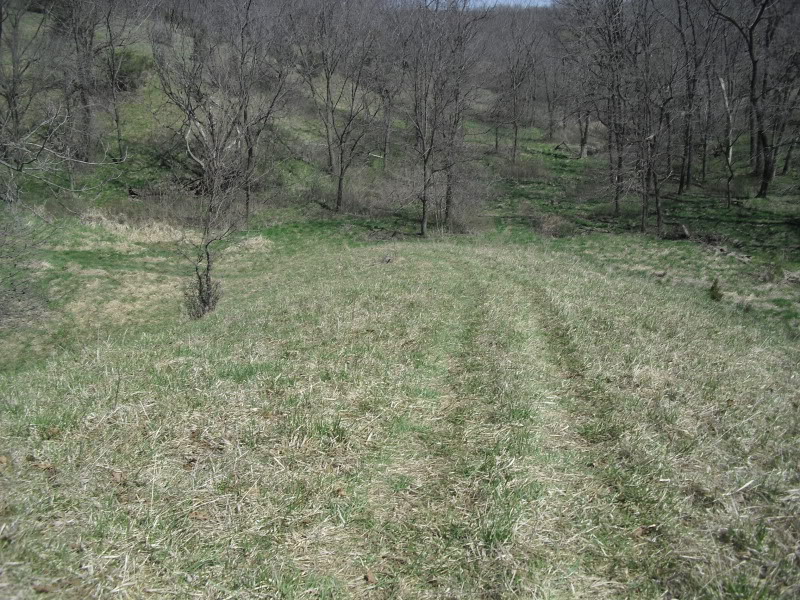
The plan called for a 12 X 12 spacing and 300 trees per acre (normal planting is 600 trees per acre) so we alternated rows of cedars and hardwoods.
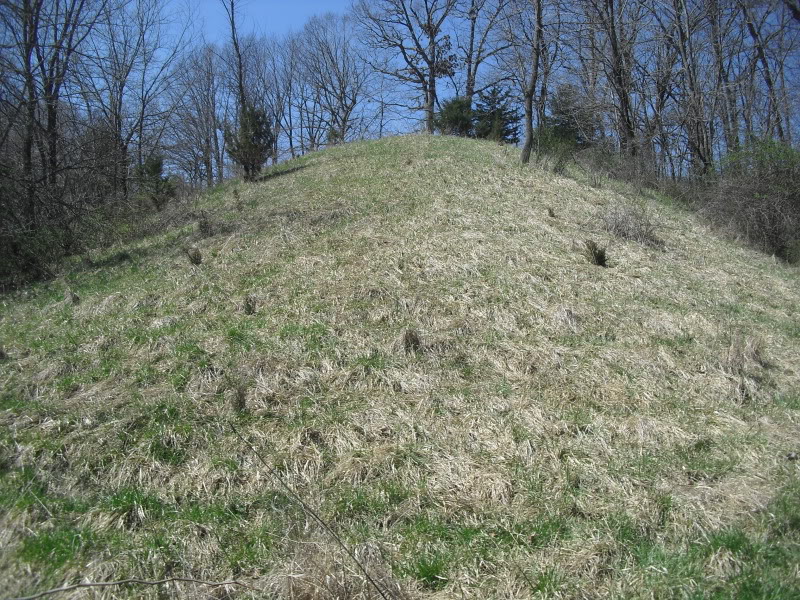
I hired helpers but even then it tool 5 of us the entire day to plant the hillsides
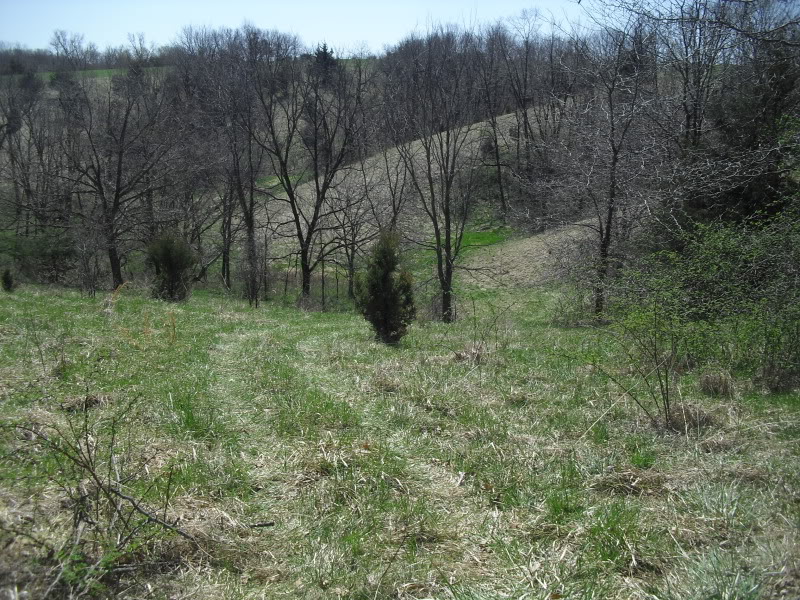
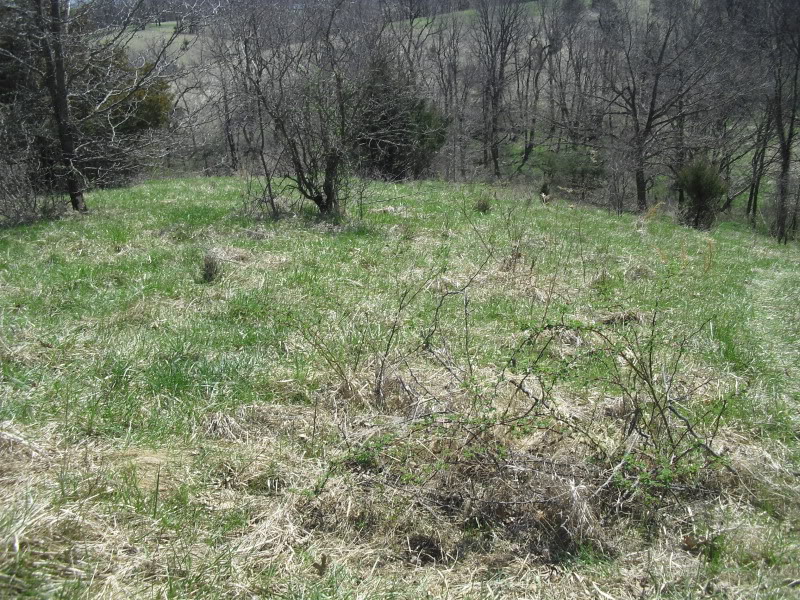
We planted a diverse mix of white and red oaks along with some black walnuts
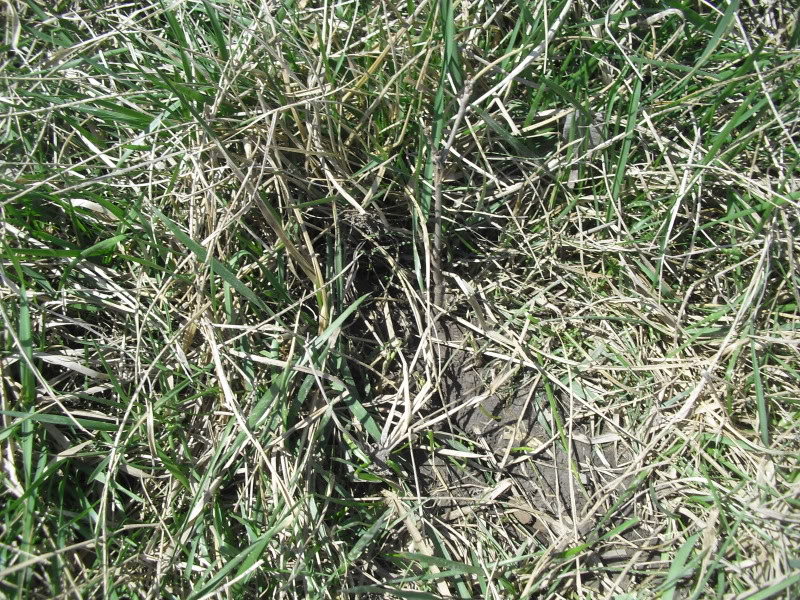
and of course red cedars
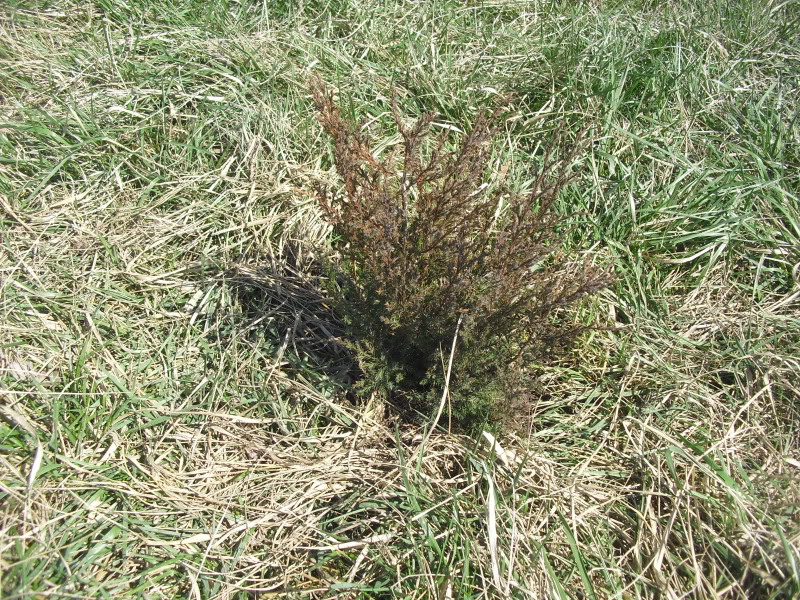
The preferred method is to band spray 2 ounces of Oust XP and 1 quart of glyphosate in September the fall before to prepare for sprig planting but in this case we we're offered a "take it or leave it" cost share option that became available in late winter...so we took it and then planted and sprayed around the trees after planting.
They are hard to see in the grass!
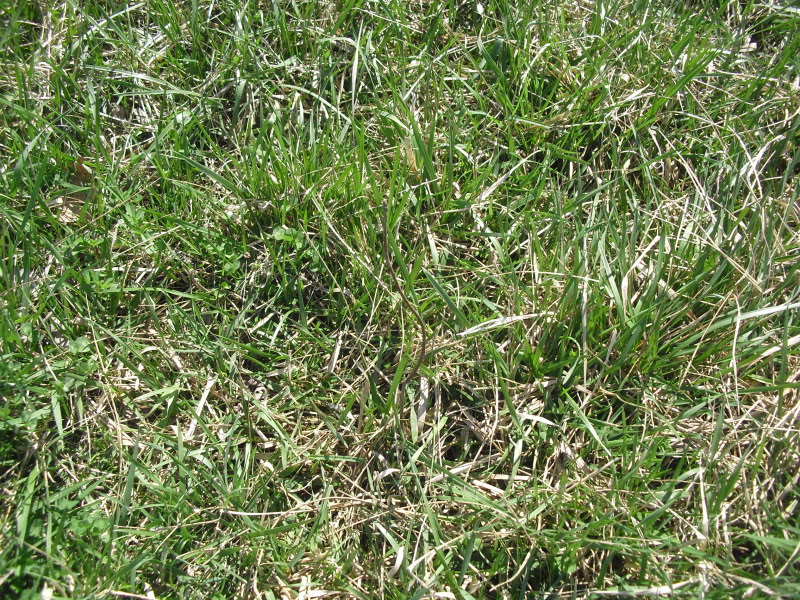
I sprayed them all by hand with my 3 gallon backpack sprayer using 1 ounce of OustXP, 1 quart of glyphosate and 2 quarts of simazine per acre.
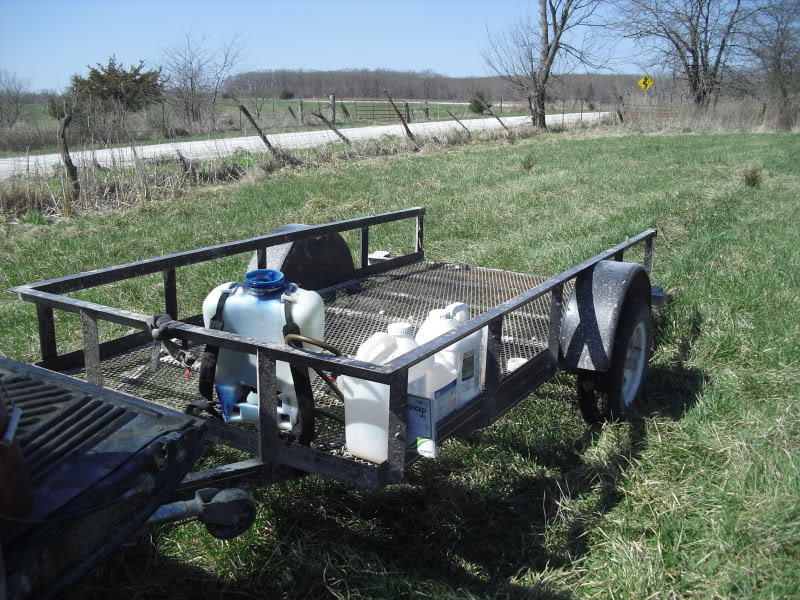
In a week or so the killed strips should be clearly visible
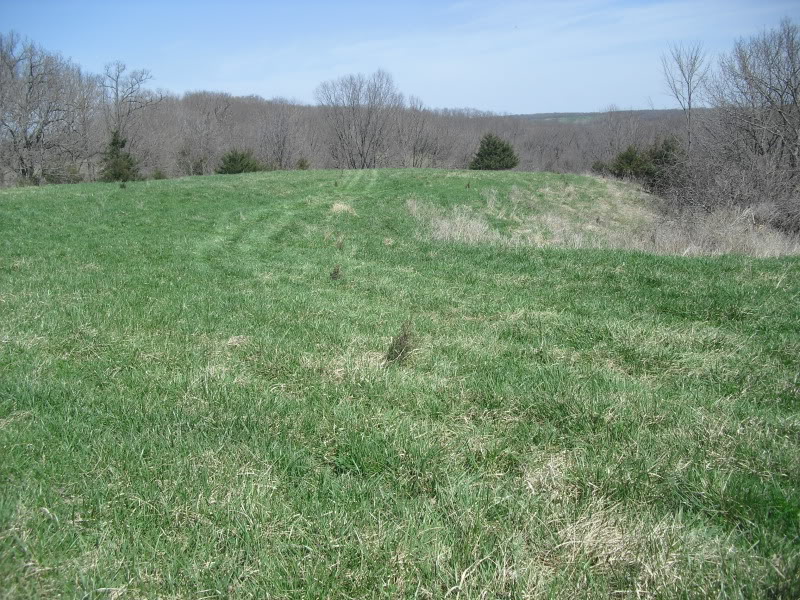
We also got cost share to kill invasives in the tree planting area which consisted mostly of honey locusts, all of which were girdled and treated with Tordon RTU
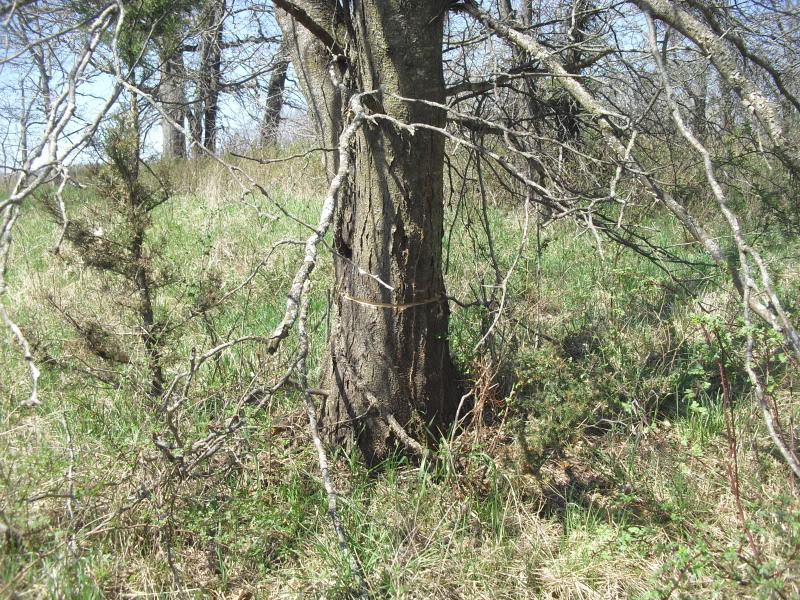
Phomopsis blight (Phomopsis juniperovora) attacks seedling red cedars and other junipers and the Missouri Nursery lost their entire crop of seedlings this year. The Iowa DNR State Nursery lost a large portion of them and were unable to fill many orders, ours appear fairly healthy but time will tell if they will survive or not. The Nursery stands behind their seedlings so I always document large scale losses and have the District Forester look at them if there is a mass die off and then get them replaced the following spring.
Eastern Red Cedar Tree Blight
In this case we are hoping that all the hard work results in a successful planting and these hillsides will one day become a beautiful and useful timber teeming with wildlife!
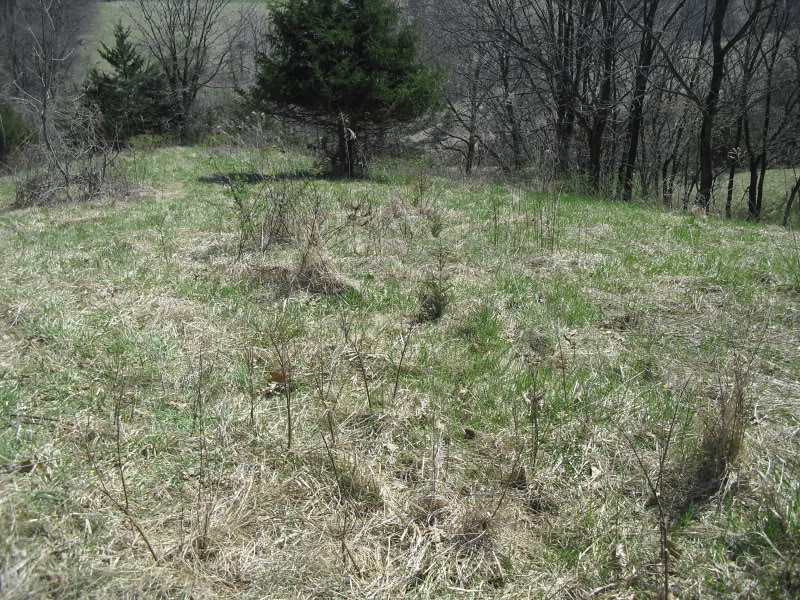
If your considering a a tree planting in 2012...plan ahead now and get the rows treated this fall in preparation for planting! If you need an over the top grass herbicide both Fulisade and Clethodim can be safely used after trees are growing.
Fusilade II
Clethodim
Leave a legacy on your land and plan a future tree planting!
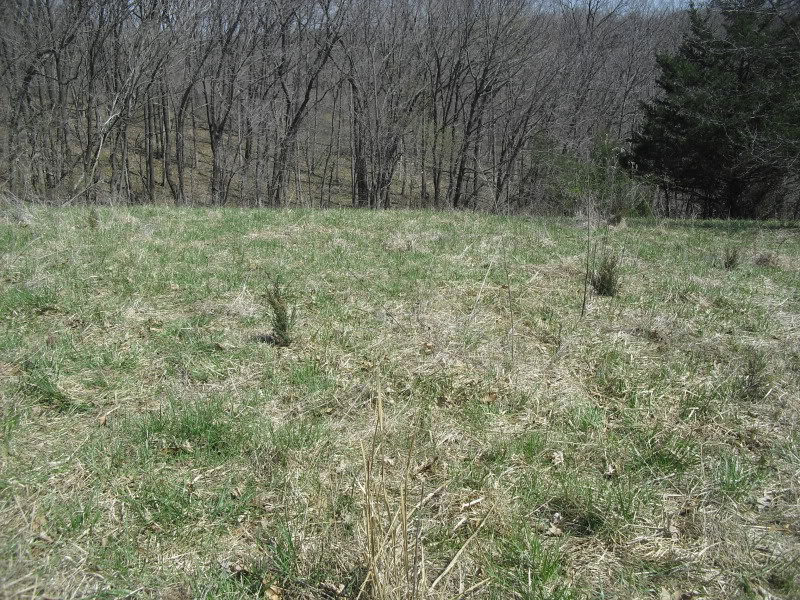
waltrogers
Ms Delta
I've noticed that legacies seem to come at the cost of a sore back.
letemgrow
PMA Member
I've noticed that legacies seem to come at the cost of a sore back.
It sure is very rewarding work tho. :way:
dbltree
Super Moderator
I've noticed that legacies seem to come at the cost of a sore back.
Gotta get you out of the office more often Walt!
District Forester Jeremy Cochran called me to say he check the tree planting and is concerned that the red cedars may be stricken with phomopsis which is a bummer after all that work!!
He said to keep an eye on them and if they die to report it to the State Nursery within 3 weeks to get refunded or replacements for next year.
He encouraged planting Norway Spruce along with the cedars so one doesn't lose every conifer planted, to which I agree...if one can fence them to protect against marauding bucks each fall...
whitetail fanatic
Member
Paul, have you sprayed oust directly over white cedars?I have had tough luck doing that... I can't tell for sure if its the oust that is killing them, but it seems that when I just spray the ground around them and not over top, the survival rate is much higher... Just a thought for whitetail fanatic. :way:
I have not worked with white cedars so I would use caution in that regard but I suspect if you sprayed over the top and caused damage that they may not have been dormant.
Thanks for the warning IQDM. Can you give any more details on if the white cedars you've treated were dormant or not? What area (Wisconsin, Iowa, etc) and what time of year? Did most of them survive OK if you just sprayed the ground around them and not directly over them?
Paul, have you sprayed over the top of actively growing RED cedar or white spruce with oust and have them survive OK?
I have a lot more to spray yet so I want to make sure I do it right.
thanks!
dbltree
Super Moderator
Thanks for the warning IQDM. Can you give any more details on if the white cedars you've treated were dormant or not? What area (Wisconsin, Iowa, etc) and what time of year? Did most of them survive OK if you just sprayed the ground around them and not directly over them?
Paul, have you sprayed over the top of actively growing RED cedar or white spruce with oust and have them survive OK?
I have a lot more to spray yet so I want to make sure I do it right.
thanks!
No...I always spray while dormant Wes and they are still dormant down here so certainly yours are as well so you should have no problems.
whitetail fanatic
Member
No...I always spray while dormant Wes and they are still dormant down here so certainly yours are as well so you should have no problems.
Great, thanks again Paul. Snowing and 36 degrees up here right now!What do you watch for to tell when they have broke dormancy? The first sign of their foliage turning a brighter green? Or do they have to start putting on new growth from the tips of their branches to be considered breaking dormancy?
Also, another question for IQDM: were you spraying the white cedars with a back pack sprayer? If so, how much oust and how many gallons of water? Also, did you do a light mist, or heavy mist? I think I tend to spray pretty heavy when I'm using a back pack sprayer. Seems like I go over things with 2 light mists, so I'm really doing a heavy mist altogether. I've been putting 1/3rd ounce of oust xp in 4 gallons of water.
IQDM, just to repat my questions from the previous post in case they get too far buried:
"Thanks for the warning IQDM. Can you give any more details on if the white cedars you've treated were dormant or not? What area (Wisconsin, Iowa, etc) and what time of year? Did most of them survive OK if you just sprayed the ground around them and not directly over them?"
thanks again!
dbltree
Super Moderator
Great, thanks again Paul. Snowing and 36 degrees up here right now!What do you watch for to tell when they have broke dormancy? The first sign of their foliage turning a brighter green? Or do they have to start putting on new growth from the tips of their branches to be considered breaking dormancy?
There will be new green growth, more obvious on pines and spruces then cedars but new just the same. Your a long ways from having to worry about that just yet Wes but I'll try to remember to post some pictures on the subject later.
I use a BP sprayer and direct the spray around the tree base so I almost never spray the tree anyway....
IQDM
New Member
Yes they were dormant. I am in East central Wisconsin so I am usually a week or 2 behind the Iowa guys as far as warm weather and spraying goes. Yes the ones that I sprayed around and not over the top did much better IMO. I dont know what makes the white cedars different from other conifers or why they the oust seems to affect them, but I can not see any buds on a cedar like on all the other conifers. Maybe Paul can elaborate on the difference?Thanks for the warning IQDM. Can you give any more details on if the white cedars you've treated were dormant or not? What area (Wisconsin, Iowa, etc) and what time of year? Did most of them survive OK if you just sprayed the ground around them and not directly over them?
Paul, have you sprayed over the top of actively growing RED cedar or white spruce with oust and have them survive OK?
I have a lot more to spray yet so I want to make sure I do it right.
thanks!
I am spraying trees with an atv sprayer with a hand sprayer connected to it. I spray around and not over the top of the white cedars, but for all the other trees I just spray right over the top. The sprayer is a 35gal tank (full) and I put 2oz of oust xp and 4qt of simazine in it. Then I spray the ground so that if a oak leaf were to be sprayed, it would be wet but not dripping wet. I probably should calibrate my sprayer tip and make sure that I am spraying 2oz of oust and 4qt simazine per acre, but I always run out of time and it never ends up getting done:thrwrck:. I have been spraying this same way for a couple years now so I guess if it works, thats all that matters. If you would like to do as I say and not as I do, I believe there is sprayer calibration info in the herbicide thread :way:Great, thanks again Paul. Snowing and 36 degrees up here right now!What do you watch for to tell when they have broke dormancy? The first sign of their foliage turning a brighter green? Or do they have to start putting on new growth from the tips of their branches to be considered breaking dormancy?
Also, another question for IQDM: were you spraying the white cedars with a back pack sprayer? If so, how much oust and how many gallons of water? Also, did you do a light mist, or heavy mist? I think I tend to spray pretty heavy when I'm using a back pack sprayer. Seems like I go over things with 2 light mists, so I'm really doing a heavy mist altogether. I've been putting 1/3rd ounce of oust xp in 4 gallons of water.
IQDM, just to repat my questions from the previous post in case they get too far buried:
"Thanks for the warning IQDM. Can you give any more details on if the white cedars you've treated were dormant or not? What area (Wisconsin, Iowa, etc) and what time of year? Did most of them survive OK if you just sprayed the ground around them and not directly over them?"
thanks again!
whitetail fanatic
Member
thanks for clarifying IQDM. Another question for you if you don't mind, what percentage of the white cedars would you estimate survived when you sprayed right over the top and what percent survived when you sprayed around them and were careful not to get spray on the foliage?
The first time I sprayed around some white cedars with oust, about a week ago, I was not really careful about not getting it on the foliage. At that time, I was under the impression that there was no way I could harm them with this spray, especially since they were dormant. Today, I was careful not to get it on the foliage. When the time comes, I will report any difference I notice between the 2 methods. From now on, I will definitely be careful to spray around them and not over them.
thanks!
The first time I sprayed around some white cedars with oust, about a week ago, I was not really careful about not getting it on the foliage. At that time, I was under the impression that there was no way I could harm them with this spray, especially since they were dormant. Today, I was careful not to get it on the foliage. When the time comes, I will report any difference I notice between the 2 methods. From now on, I will definitely be careful to spray around them and not over them.
thanks!
SDHunt24/7
New Member
Transplanting small trees
I have a question for the experts here. I had an interesting offer from a local farmer. He has tons of small cedar trees from 1 ft to 2 ft tall growing all over and said I could take as many of them I want. Have any of you dug up small trees like this before and transplanted them? I assume this would be best done in the fall to not put the tree through the harsh summer after being moved. As long as you save the tap root And as much of the root system you can will the tree have a good chance? What do you recommend to wrap or place the tree in for transport? I was thinking some big lick tubs or something. Do you have to keep dirt around the roots or can they just be kept in water? Any advice would be greatly appreciated, but again this would be a late summer or early
I have a question for the experts here. I had an interesting offer from a local farmer. He has tons of small cedar trees from 1 ft to 2 ft tall growing all over and said I could take as many of them I want. Have any of you dug up small trees like this before and transplanted them? I assume this would be best done in the fall to not put the tree through the harsh summer after being moved. As long as you save the tap root And as much of the root system you can will the tree have a good chance? What do you recommend to wrap or place the tree in for transport? I was thinking some big lick tubs or something. Do you have to keep dirt around the roots or can they just be kept in water? Any advice would be greatly appreciated, but again this would be a late summer or early
SDHunt24/7
New Member
I ended my last post with an abrupt keystroke. I was closing with the fact that this would be a late summer or early fall project. Doubletree I am sure you have taken on this venture before with all your experience.
SDHunt24/7
New Member
How much of the root system needs to be saved and how deep does one have to dig? Also how did you transport them and keep them moist? Thanks dbltreeYep...easy to transplant cedars, better early while dormant of course but works very well :way:
Last edited:
